Thingiverse

Easy as 1 2 3 Sand Castle/Mold by WyattChurch1
by Thingiverse
Last crawled date: 3 years, 1 month ago
We've hit 500 downloads!
It's easy as one... two... three!
All you need to know:
The Easy as 1 2 3 Sand Castle and Mold is a castle and mold that were designed to be as EASY to use as possible. Unlike other mold designs you don't have to print a bunch of pieces to make one castle, this mold is one piece. Just one print and you're ready to have fun. (1) First, you download the mold, which is print ready. (2) Second, you print the mold, which is already scaled. (3) And third, you fill it with sand and place it down. If you don't feel like getting sand in your shorts or don't have a beach nearby you can print the castle by itself. (1) Download (2) Print (3) Play! To get a more in-depth explanation of my castle keep reading, otherwise you are ready to start printing and playing.
This is my entry for the #BuildACastle challenge. If you like it please support it with a like, collect, and comment!
Connection to mathematics:
While you read this you may wonder how my castle relates to math. As you probably know by now the number three appears a lot in this description and the reason for that is because the number three is used in so many different mathematical ways.
• In architecture every structural element is composed of a triangle, and a triangle has three corners and three sides. The reason why architects use triangles is because they are strong due to the fact that they distribute the weight effectively.
• Another way how the number three relates to mathematics is because it is the simplest shape. And simple is another way of saying EASY. An example of why it is the simplest shape is because a triangle has the least amount of sides that a shape, closed polygon, can have.
• And finally the THIRD and final way my castle is related to the number three and mathematics is because it's an .stl file. You may not know this but every surface in an .stl file is a triangle. This is so the program can read it easily, because a triangle is simple and EASY to comprehend.
Who am I:
Hi,
My name is Wyatt and I am 14 years old. I learned about 3D printers when I was 12 years old and immediately was interested. I started looking for printers online and the price of them crushed my dreams. I didn't give up and started researching the technology and science behind 3d printers and narrowed down what I wanted and what I didn't need. I found the SoliDoodle 2 Base and because it was only 499 at the time I was ready to tackle the complicity of the rugged printer. I asked for this printer on my 13th birthday, but I didn't get it... I got the SoliDoodle 2 Pro! Due to the fact that this printer was relatively inexpensive there had to be a lot of calibrating and fixing done. After half a year of trial and error due to printer malfunctions and software malfunction. I could print some pretty complex things such as the Cityscape and the Supreme Court Building. Then I was looking at YouTube and saw that you could print in wood! So I found the wood filament on amazon and ordered it. I tested it out in my printer and printed the MakerBot Gnome. It was so amazing I turned off my printer to show my family that I had printed wood! That was a big mistake because if you let the wood filament cool in your extruder it will get clogged. Long story short I had to take apart the extruder and drill and hole though the clogged part. Then I was back on track to being a maker. From then to now I have explored different design softwares and I did most of my designing in Sketchup make until I transitioned into junior high school where I took an exploring technology course and learned about Rhinoceros. At the time Rhino for mac was still in the WIP stage which meant I could get a $1000 dollar software for free! From then to now I've been using mostly Rhino for designing in 3D. My castle and mold were designed more than 90% in Rhino.
Motivation:
I was inspired to enter in this challenge because when I looked at all the current entries I saw that either the designs were flawed, it wasn't even a sand castle, you had to print multiple pieces to construct a mold, or the designs were being held back because they were trying too hard to relate to math. Instead of doing those things I made my files scaled, print ready, and support free. I also included a file of just my castle, not the mold, so if you don't like sand you can still have fun! My castle does not tessellate because tessellating holds back your imagination. However it is composed of geometrical shapes such as cylinders, quadrilateral pyramids, cones, rings, and even simple cubes. I made every element of this entry without any help. This castle should win the challenge because it relates to math, includes a castle and mold, is EASY to use, and it looks awesome.
Behind the scenes:
All elements of the castle and mold were created in free software’s. The castle and mold were mostly constructed in Rhino 5 (WIP which is why it was free). I also used Sketchup Make. Editing and finalizing was done in meshlab, netfabb basic, and Repetier for sizing. For the different photos of the castle I used rendering films in Rhino. For the colorful castle and diagram castle I used Photoshop Elements (free trial). I learned how to use all of these programs by Dan Sander's tech class, messing around with buttons, or YouTube.
Time-lapse of my castle and mold being printed
Special thanks to:
Brigitta Suwandana, Les Nielsen, and Dan Sander.
It's easy as one... two... three!
All you need to know:
The Easy as 1 2 3 Sand Castle and Mold is a castle and mold that were designed to be as EASY to use as possible. Unlike other mold designs you don't have to print a bunch of pieces to make one castle, this mold is one piece. Just one print and you're ready to have fun. (1) First, you download the mold, which is print ready. (2) Second, you print the mold, which is already scaled. (3) And third, you fill it with sand and place it down. If you don't feel like getting sand in your shorts or don't have a beach nearby you can print the castle by itself. (1) Download (2) Print (3) Play! To get a more in-depth explanation of my castle keep reading, otherwise you are ready to start printing and playing.
This is my entry for the #BuildACastle challenge. If you like it please support it with a like, collect, and comment!
Connection to mathematics:
While you read this you may wonder how my castle relates to math. As you probably know by now the number three appears a lot in this description and the reason for that is because the number three is used in so many different mathematical ways.
• In architecture every structural element is composed of a triangle, and a triangle has three corners and three sides. The reason why architects use triangles is because they are strong due to the fact that they distribute the weight effectively.
• Another way how the number three relates to mathematics is because it is the simplest shape. And simple is another way of saying EASY. An example of why it is the simplest shape is because a triangle has the least amount of sides that a shape, closed polygon, can have.
• And finally the THIRD and final way my castle is related to the number three and mathematics is because it's an .stl file. You may not know this but every surface in an .stl file is a triangle. This is so the program can read it easily, because a triangle is simple and EASY to comprehend.
Who am I:
Hi,
My name is Wyatt and I am 14 years old. I learned about 3D printers when I was 12 years old and immediately was interested. I started looking for printers online and the price of them crushed my dreams. I didn't give up and started researching the technology and science behind 3d printers and narrowed down what I wanted and what I didn't need. I found the SoliDoodle 2 Base and because it was only 499 at the time I was ready to tackle the complicity of the rugged printer. I asked for this printer on my 13th birthday, but I didn't get it... I got the SoliDoodle 2 Pro! Due to the fact that this printer was relatively inexpensive there had to be a lot of calibrating and fixing done. After half a year of trial and error due to printer malfunctions and software malfunction. I could print some pretty complex things such as the Cityscape and the Supreme Court Building. Then I was looking at YouTube and saw that you could print in wood! So I found the wood filament on amazon and ordered it. I tested it out in my printer and printed the MakerBot Gnome. It was so amazing I turned off my printer to show my family that I had printed wood! That was a big mistake because if you let the wood filament cool in your extruder it will get clogged. Long story short I had to take apart the extruder and drill and hole though the clogged part. Then I was back on track to being a maker. From then to now I have explored different design softwares and I did most of my designing in Sketchup make until I transitioned into junior high school where I took an exploring technology course and learned about Rhinoceros. At the time Rhino for mac was still in the WIP stage which meant I could get a $1000 dollar software for free! From then to now I've been using mostly Rhino for designing in 3D. My castle and mold were designed more than 90% in Rhino.
Motivation:
I was inspired to enter in this challenge because when I looked at all the current entries I saw that either the designs were flawed, it wasn't even a sand castle, you had to print multiple pieces to construct a mold, or the designs were being held back because they were trying too hard to relate to math. Instead of doing those things I made my files scaled, print ready, and support free. I also included a file of just my castle, not the mold, so if you don't like sand you can still have fun! My castle does not tessellate because tessellating holds back your imagination. However it is composed of geometrical shapes such as cylinders, quadrilateral pyramids, cones, rings, and even simple cubes. I made every element of this entry without any help. This castle should win the challenge because it relates to math, includes a castle and mold, is EASY to use, and it looks awesome.
Behind the scenes:
All elements of the castle and mold were created in free software’s. The castle and mold were mostly constructed in Rhino 5 (WIP which is why it was free). I also used Sketchup Make. Editing and finalizing was done in meshlab, netfabb basic, and Repetier for sizing. For the different photos of the castle I used rendering films in Rhino. For the colorful castle and diagram castle I used Photoshop Elements (free trial). I learned how to use all of these programs by Dan Sander's tech class, messing around with buttons, or YouTube.
Time-lapse of my castle and mold being printed
Special thanks to:
Brigitta Suwandana, Les Nielsen, and Dan Sander.
Similar models
thingiverse
free

Cool 3D Sand Castle Mold by nlama14
...stle. some altercations were made in order to perfect it but now, this castle is ready to show off some math skills at the beach!
thingiverse
free

Sand Castle Math Practice by Granite
... with more molds.
a blank puzzle piece was included in 123d format so that anyone can remix and add their own touch to the set.
thingiverse
free

All In One Geometry Sand Castle Kit!! by pink846342
...y be stored in the big castle mold!
now you can print it down, go to the beach, and build your masterpiece with simple geometry!!
thingiverse
free

Castle for the beach by justmilas
...astle with them but can be used as prop.
i didn't had the chance to test print the parts since i don't own an 3d printer.
thingiverse
free

Sand Castle Mold Set by ConnorRMacMillan
...inter, but can easily be re-sized. all castle walls have a 10-degree angle for easy mold removal while still remaining printable.
thingiverse
free
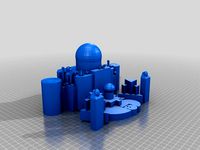
Mathematical Castle by johnsonc
...johnsonc
thingiverse
i wanted to make a castle that would look cool (castle and exterior of mold) but, would still include math.
3dwarehouse
free

Fractal (Sierpiński's triangle)
...'t allowed me to do it :) #fractal #geometry #infinity #math #mathematic #science #sierpiński #sierpińskis_triangle #triangle
thingiverse
free
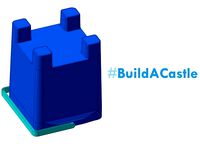
Sand Castle Mold by EricWeber
...you have got your sand castle.
all parts are modelled in autodesk inventor 2016 student version,
fell free to print and download.
thingiverse
free

Nautilus Shell Castle (Fabonacci/Logarithmic Spiral) by cstarrman
...ng site to a local school, as soon as i would receive it. it is a smaller printer, but a great learning 3d printer.
spiral out!
thingiverse
free

Sand castle Mold by real3ddesignz
... he taught people about math with our mold. this mold is truly a mathe-magical sand head turner at the beach! - my little brother
Wyattchurch1
thingiverse
free

Mount Baker by WyattChurch1
...mount baker by wyattchurch1
thingiverse
this is accurate topography of mount baker, washington
thingiverse
free

Mount Rainier by WyattChurch1
...mount rainier by wyattchurch1
thingiverse
this is accurate topography of mount rainier, washington
thingiverse
free
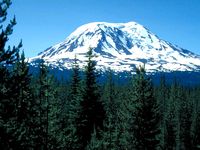
Mount Adams by WyattChurch1
...urate topography of mount adams, washington. i've included a model with the z axis called by 50% to show the mountain easier.
thingiverse
free

SoliDoodle Door Knob by WyattChurch1
...rse
it screws on securely but do not tighten too hard or it will break the threads. i used pla. my temperatures were 185 and 85.
thingiverse
free

Mount Saint Helens by WyattChurch1
...opography of mt. saint helens in washington. i've included a model with the z axis scaled by 50% to show the mountain easier.
thingiverse
free

Solidoodle Spool Holder Mk3 by WyattChurch1
...en the brackets wasn't nearly long enough. i also make a block on the top of the arms to stop the pvc pipe from slipping out.
thingiverse
free

Wrench: Tightening and Loosening by WyattChurch1
...i stole the idea of the loosening wrench from barnacules! maybe he'll see this post and make a video on the loosening wrench.
thingiverse
free

GRAMiPhone Fixed - iPhone 6 Gramophone Horn by WyattChurch1
...arance for the phone so it's not so tight. the new base file name is signified by rev 2. https://youtu.be/qzo0a7ev3iu?t=9m26s
thingiverse
free

Oneplus 3 Gramophone by brandonamito
...op3 is complete. thanks to jrperk and brycelowe / wyattchurch1 for the bits and pieces i mashed together to...
Castle
3d_export
$5

castle
...castle
3dexport
castle
3d_export
$5

castle
...castle
3dexport
castle
3d_export
$5
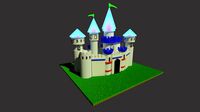
castle
...castle
3dexport
cartoon castle
archibase_planet
free

Castle
...castle
archibase planet
castle architecture
dark castle - 3d model for interior 3d visualization.
3d_export
$7

castle
...castle
3dexport
model castle in cinema4d
archibase_planet
free

Castle
...castle
archibase planet
castle building construction
castle - 3d model (*.3ds) for exterior 3d visualization.
3d_export
$10
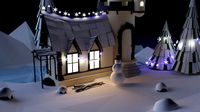
castle
...castle
3dexport
low poly model of a castle
3d_export
$5

Castle
...castle
3dexport
night castle in the light of the moon
3d_export
free

Castle
...castle
3dexport
flying castle on the background of the moon
archibase_planet
free
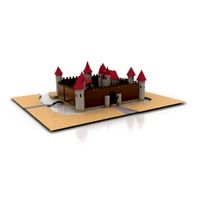
Castle
...castle
archibase planet
construction castle
castle n250608 - 3d model (*.gsm+*.3ds) for interior 3d visualization.
Mold
3ddd
$1

molding
...molding
3ddd
молдинг
molding
3ddd
$1
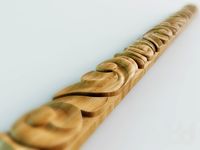
molding
...molding
3ddd
молдинг , резьба
molding
3d_export
$10
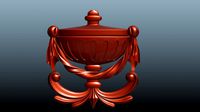
molding
...molding
3dexport
molding, casting, baguette, decoration
3d_export
$10

molding
...molding
3dexport
molding, casting, baguette, decoration
3d_export
$10

molding
...molding
3dexport
molding, casting, baguette, decoration
3d_export
$10

molding
...molding
3dexport
molding, casting, baguette, decoration
3d_export
$10
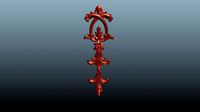
molding
...molding
3dexport
molding, casting, baguette, decoration
3d_export
$10

molding
...molding
3dexport
molding, casting, baguette, decoration
3d_export
$10

molding
...molding
3dexport
molding, casting, baguette, decoration
design_connected
$16

Mold
...mold
designconnected
eternit mold computer generated 3d model. designed by charlot, michel.
Sand
3ddd
$1
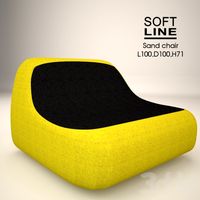
Softline / Sand
...softline / sand
3ddd
softline , sand
softline / sand
archibase_planet
free
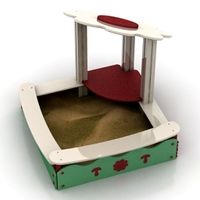
Sand box
...sand box
archibase planet
sand-box sand box sandbox
sand box - 3d model (*.gsm+*.3ds) for exterior 3d visualization.
3d_ocean
$4
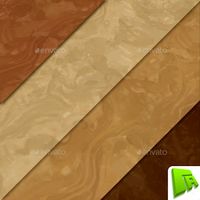
Sand
...oly mud sand stylized texture tiling
this is a set of 4 hand painted sand textures, all tiling. each one is a flat png at 512×512
archibase_planet
free

Sand-box
...sand-box
archibase planet
sand-box playground
sand-box - 3d model for interior 3d visualization.
3d_ocean
$3
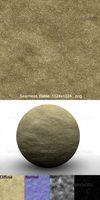
Sand 1
...sand 1
3docean
a seamless tileable sand texture with diffuse, bump, normal and ao maps.
3d_ocean
$4

Desert Sand
...to was taken with the new canon rebel t2i 18 megapixel camera. included are tileable textures ranging from 2048×2048 down to 2...
turbosquid
$58

Sand carrier Sand carrier cargo ship engineering ship cargo ship transport sand farm sand carrier Hu
... ship transport sand farm sand carrier hu for download as max on turbosquid: 3d models for games, architecture, videos. (1651996)
3d_ocean
$6
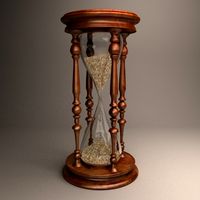
Sand clock
...de in 3ds max 2013 3dsmax with vray render included material and light obj file fbx file hope you like it please don’...
3d_export
free

sand timer
...sand timer
3dexport
3d_ocean
$5

Sand Clock
...d clock for product visualization and interior decoration. poly count: 5706 file formats: 3ds max 2013 default, 3ds, fbx and obj
Easy
design_connected
$16
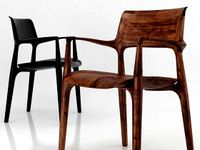
Easy
...easy
designconnected
sollos easy computer generated 3d model. designed by almeida, jader.
design_connected
$20

Easy
...easy
designconnected
established & sons easy armchairs computer generated 3d model. designed by ed carpenter.
3d_ocean
$1

Easy Button
... it is accurate in close-ups. you can drop this model right into any setting. the textures are included as well as links to do...
design_connected
$16
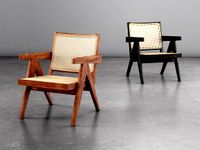
Easy Armchair
...easy armchair
designconnected
easy armchair computer generated 3d model. designed by jeanneret, pierre.
3ddd
$1

Pouf EASY
... easy
3ds max 2010.v-ray 2.40.03.file formats fbx,obj. pouf desiree 2014 easy. dimensions 100x100x45 cm.
design_connected
$18
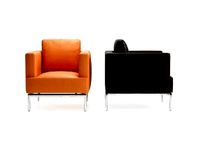
Easy Armchair
...easy armchair
designconnected
fsm easy armchair computer generated 3d model. designed by hartmann, markus.
design_connected
$16

Easy Rider
...easy rider
designconnected
bulo easy rider computer generated 3d model. designed by venlet, danny.
design_connected
$16

Easy Chair
...easy chair
designconnected
magis easy chair computer generated 3d model. designed by seymour, jerszy.
design_connected
$11
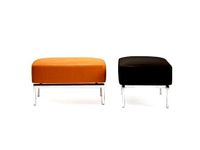
Easy Footstool
...easy footstool
designconnected
fsm easy footstool computer generated 3d model. designed by hartmann, markus.
design_connected
$18

Doda - Easy
...doda - easy
designconnected
molteni & c doda - easy computer generated 3d model. designed by laviani, ferruccio.
3
turbosquid
$10
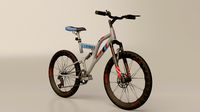
Mountain Bike 3 -3 of 3
...model mountain bike 3 (#3 of 3) for download as fbx and blend on turbosquid: 3d models for games, architecture, videos. (1438752)
turbosquid
$6

Rock 3-3
...urbosquid
royalty free 3d model rock 3-3 for download as obj on turbosquid: 3d models for games, architecture, videos. (1628065)
turbosquid
$29
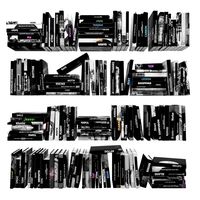
Books 150 pieces 3-3-3
...books 150 pieces 3-3-3 for download as max, obj, fbx, and stl on turbosquid: 3d models for games, architecture, videos. (1384033)
turbosquid
$3
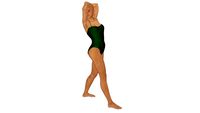
Genesis 3 Clothing 3
... available on turbo squid, the world's leading provider of digital 3d models for visualization, films, television, and games.
3d_export
$5
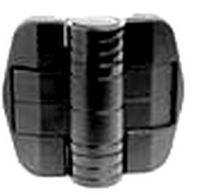
hinge 3
...hinge 3
3dexport
hinge 3
3ddd
$1
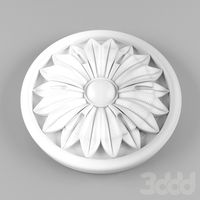
Розетка 3
...розетка 3
3ddd
розетка
розетка 3
turbosquid
$50
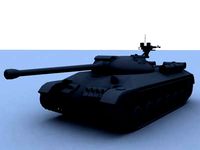
is-3
... available on turbo squid, the world's leading provider of digital 3d models for visualization, films, television, and games.
turbosquid
$10
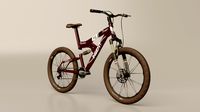
Mountain Bike 3 -2 of 3
...model mountain bike 3 (#2 of 3) for download as fbx and blend on turbosquid: 3d models for games, architecture, videos. (1438750)
turbosquid
$10

Mountain Bike 1 -3 of 3
...model mountain bike 1 (#3 of 3) for download as fbx and blend on turbosquid: 3d models for games, architecture, videos. (1438743)
3d_export
$5
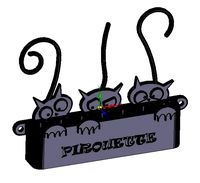
3 CATS
...3 cats
3dexport
3 cats pen holder
1
turbosquid
$69

armchairs(1)(1)
... available on turbo squid, the world's leading provider of digital 3d models for visualization, films, television, and games.
turbosquid
$15
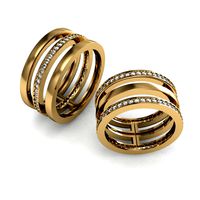
ring 1+1
... available on turbo squid, the world's leading provider of digital 3d models for visualization, films, television, and games.
turbosquid
$10
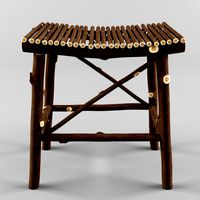
chair(1)(1)
... available on turbo squid, the world's leading provider of digital 3d models for visualization, films, television, and games.
turbosquid
$8

Chair(1)(1)
... available on turbo squid, the world's leading provider of digital 3d models for visualization, films, television, and games.
turbosquid
$2
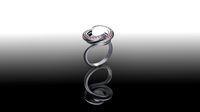
RING 1(1)
... available on turbo squid, the world's leading provider of digital 3d models for visualization, films, television, and games.
turbosquid
$1

Table 1(1)
... available on turbo squid, the world's leading provider of digital 3d models for visualization, films, television, and games.
turbosquid
$1

house 1(1)
... available on turbo squid, the world's leading provider of digital 3d models for visualization, films, television, and games.
turbosquid
$59
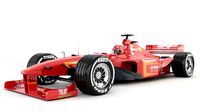
Formula 1(1)
...lty free 3d model formula 1 for download as max, fbx, and obj on turbosquid: 3d models for games, architecture, videos. (1567088)
design_connected
$11

No 1
...no 1
designconnected
sibast no 1 computer generated 3d model. designed by sibast, helge.
turbosquid
$2
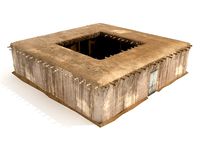
desert house(1)(1)
...3d model desert house(1)(1) for download as 3ds, max, and obj on turbosquid: 3d models for games, architecture, videos. (1055095)
2
design_connected
$11
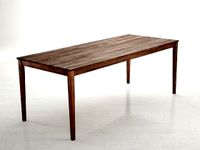
No 2
...no 2
designconnected
sibast no 2 computer generated 3d model. designed by sibast, helge.
turbosquid
$6
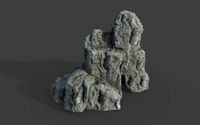
Cliff Rock 2-2
...uid
royalty free 3d model cliff rock 2-2 for download as obj on turbosquid: 3d models for games, architecture, videos. (1619161)
turbosquid
$29
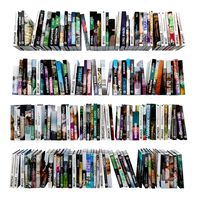
Book variation 2 2
...3d model book variation 2 2 for download as max, obj, and fbx on turbosquid: 3d models for games, architecture, videos. (1366868)
turbosquid
$22

Classic baluster (2) (2)
...assic baluster (2) (2) for download as max, obj, fbx, and stl on turbosquid: 3d models for games, architecture, videos. (1483789)
turbosquid
$99
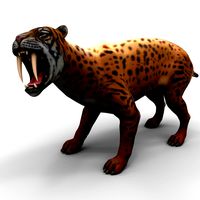
Smilodon 2 Pose 2
... available on turbo squid, the world's leading provider of digital 3d models for visualization, films, television, and games.
turbosquid
$20
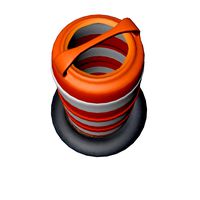
Barrel Barricade 2-2
... available on turbo squid, the world's leading provider of digital 3d models for visualization, films, television, and games.
turbosquid
$6

Wall Trophy (2) (2)
... available on turbo squid, the world's leading provider of digital 3d models for visualization, films, television, and games.
turbosquid
free
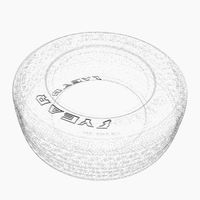
Tire label 2 of 2
... available on turbo squid, the world's leading provider of digital 3d models for visualization, films, television, and games.
3ddd
$1
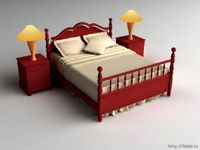
Кровать, 2 тумбочки, 2 светильника
...кровать, 2 тумбочки, 2 светильника
3ddd
кровать, 2 тумбочки, 2 светильника
нормальное качество
формат 3ds max
без текстур
3ddd
free
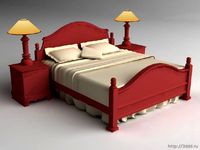
Кровать, 2 тумбочки, 2 светильника
...кровать, 2 тумбочки, 2 светильника
3ddd
кровать, 2 тумбочки, 2 светильника
нормальное качество
формат 3ds max
без текстур
